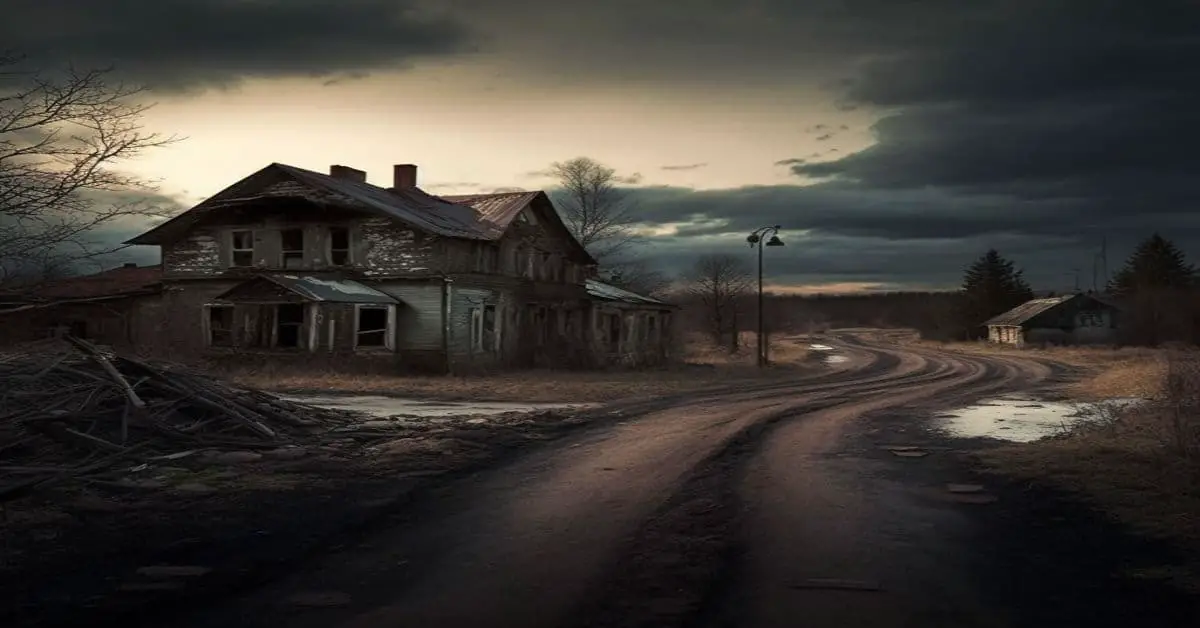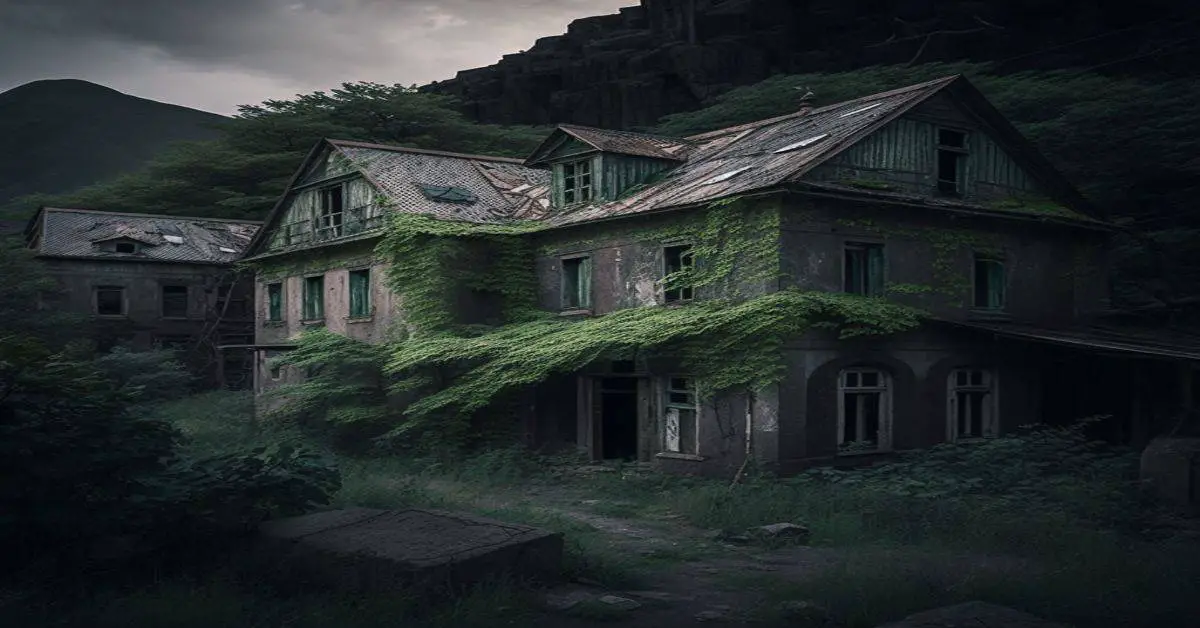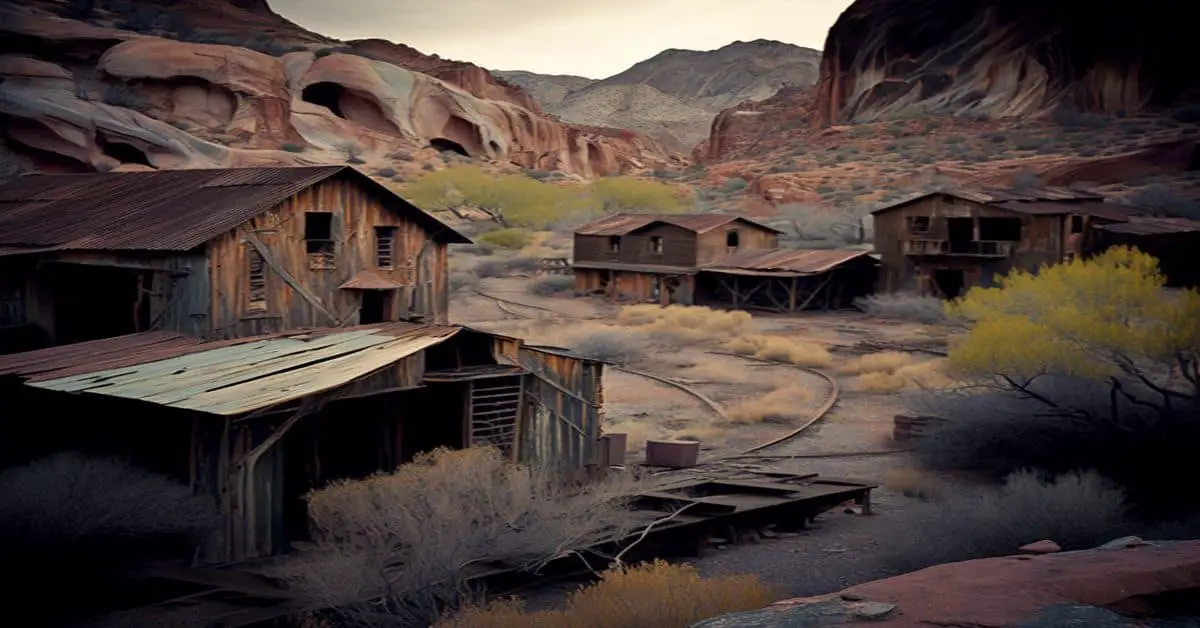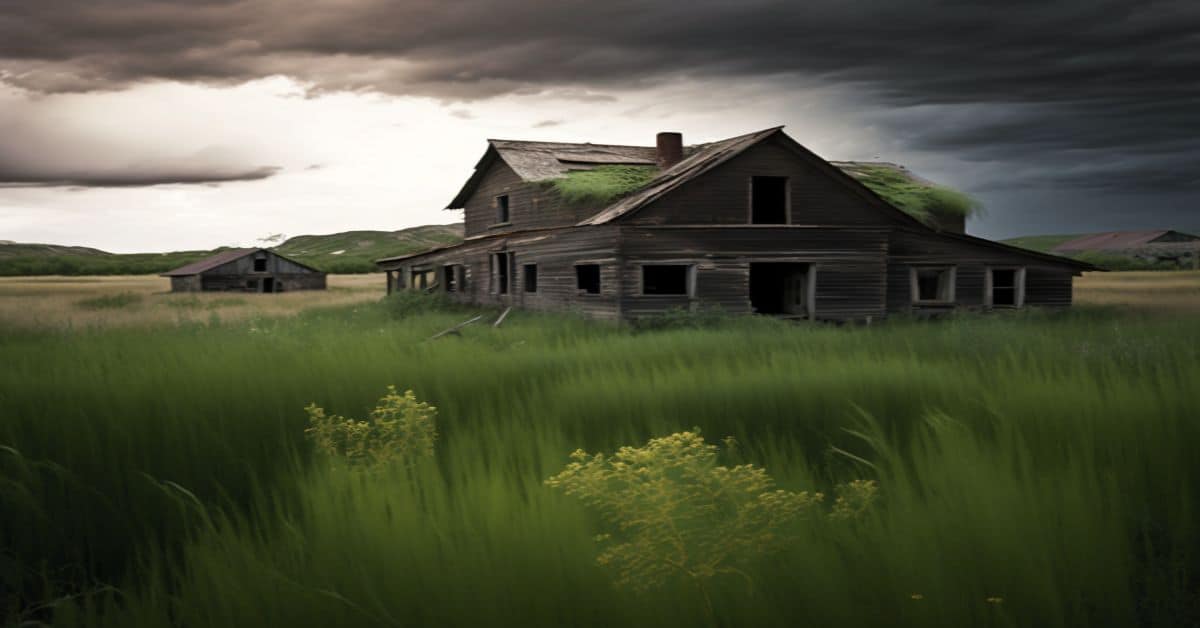Detroit Michigan Ghost Town: A Journey Through Time
Detroit, Michigan, is known for its rich history, vibrant culture, and spectacular rise and fall as an industrial powerhouse. Detroit once symbolized America’s industrial might, with thriving automotive and manufacturing industries.
However, over time, the city has faced economic decline, resulting in numerous abandoned buildings and neighborhoods, which have come to be known as Detroit, Michigan Ghost Towns. This article explores the fascinating history, causes, and current state of these ghost towns in Detroit, Michigan.
The History of Detroit
Detroit’s Origins
French settlers founded Detroit in 1701 as Fort Ponchartrain du Detroit. The city grew into the fourth-largest city in the United States in 1920, after New York City, Chicago, and Philadelphia.
Detroit’s strategic location near the Detroit River made it an important commercial hub, with its freight throughput surpassing that of New York and London.
KEY FACTS:
- Founded by French Settlers in 1701
- The fourth-largest city in the United States in 1920
The Rise and Fall of the Motor City
The automotive industry played a significant role in Detroit’s growth, with companies like Ford, General Motors, and Chrysler dominating the market. However, Detroit’s decline began in the 1940s due to job losses in the auto industry, suburbanization, and civil unrest.
The city peaked in 1950 at 1.85 million, but by 2020, it had fallen to only 640,000, marking a decline of around 65% of the population.
KEY FACTS:
- Peak Population: 1.85 Million (1950)
- Last Census: 640,000 (2020)
- Decline: Around 65% of the Population
The Ghost Towns of Detroit
Detroit, Michigan Ghost Towns are areas where buildings and neighborhoods have been abandoned, often due to economic decline, job losses, and population shifts. Empty streets, vacant homes, and decaying infrastructure characterize these ghost towns.
They serve as a haunting reminder of the city’s past prosperity and its challenges over the years.
Causes of Ghost Towns in Detroit
The primary factors that led to the emergence of Detroit, Michigan Ghost Towns include:
- The decline of the automotive industry, leading to job losses and factory closures
- Rapid suburbanization, with residents leaving the city for the suburbs
- Racial tensions and civil unrest resulting in the flight of white residents
- Economic decline, leading to poverty and criminal activity in certain areas
Notable Detroit Michigan Ghost Towns
Some of the most well-known Detroit, Michigan Ghost Towns include:
- Gary, Indiana: Once a thriving steel-making city, Gary has experienced a dramatic decline in population and economic activity, leading to widespread abandonment.
- The City of Detroit: While the larger metropolitan area is still home to millions of people, the city proper has seen a significant decrease in population and an increase in abandoned buildings.
- The Keweenaw Peninsula: Home to numerous abandoned copper mining towns, the Keweenaw Peninsula in Michigan’s Upper Peninsula offers a glimpse into the mining industry’s past and boom-to-bust cycle.
Detroit’s Abandoned Buildings and Landmarks
Detroit, Michigan Ghost Towns are not limited to residential areas. The city is also home to several abandoned buildings and landmarks, which stand as eerie reminders of the city’s past glory. Some of these abandoned places include:
Michigan Central Station
Once a bustling transportation hub, Michigan Central Station has been abandoned since the late 1980s. The massive Beaux-Arts-style building was designed by the same architects who designed New York City’s Grand Central Terminal. Despite its dilapidated state, the station remains an iconic symbol of Detroit’s past.
Packard Automotive Plant
The Packard Automotive Plant, once a thriving factory employing thousands of workers, is now a vast, decaying complex of buildings. The plant opened in 1903 and was a major producer of luxury automobiles until the company went out of business in the 1950s.
Today, the plant is a popular spot for urban explorers and photographers drawn to its eerie atmosphere and crumbling infrastructure.
The Heidelberg Project
The Heidelberg Project is an outdoor art project that transforms abandoned houses and lots in Detroit’s East Side into colorful, thought-provoking installations. The project began in 1986, and over the years, it has faced numerous challenges, including demolition and arson.
Despite these setbacks, the Heidelberg Project remains a powerful symbol of resilience and creativity in adversity.
Haunted Places in Detroit
Detroit, Michigan Ghost Towns are not the only spooky spots in the city. Detroit is also home to several haunted locations, including restaurants, bars, and hiking trails. Some of these haunted places include:
Cadieux Cafe
Cadieux Cafe, a family-owned restaurant on Cadieux Road, is rumored to be haunted. Housed in a former speakeasy, the cafe is known for its delicious mussels, beer, and live music.
However, patrons and employees have reported unexplained phenomena, such as objects moving independently and apparitions of the owner’s deceased mother.
Ghostly Grove
Located about an hour from Detroit, Ghostly Grove is a ¾-mile forest trail that is said to be haunted by the spirit of Johnny Appleseed’s twin sister, Abigail. The trail, which is only open during the Halloween season, offers a thrilling and spine-chilling experience for those brave enough to venture into the haunted woods.
The Whitney
The Whitney, a mansion built in 1894 by lumber baron David Whitney Jr., is now a restaurant and is considered one of Detroit’s most haunted buildings.
Known for its ghostly occurrences, such as apparitions and strange shadows, The Whitney has been the site of numerous paranormal investigations and ghost tours.
The Rust Belt and its Ghost Towns
The term “Rust Belt” refers to a region in the Northeast and Midwest of the United States which has experienced significant economic decline, population loss, and urban decay due to the collapse of the manufacturing industry.
Detroit, Michigan Ghost Towns are just one example of the many ghost towns found throughout the Rust Belt. Other notable ghost towns in the region include:
- Buffalo, New York
- Cleveland, Ohio
- Cincinnati, Ohio
- Columbus, Ohio
- Rochester, New York
- Trenton, New Jersey
- Pittsburgh, Pennsylvania
- Newark, New Jersey
Urban Exploration in Detroit, Michigan Ghost Towns
Urban exploration, or “urbex,” is the act of exploring abandoned and decaying structures, often for photography or historical documentation. Detroit Michigan Ghost Towns offer a unique and hauntingly beautiful setting for urban explorers drawn to the city’s abandoned buildings, factories, and neighborhoods.
Urban Exploration Etiquette and Safety
While urban exploration can be an exciting and rewarding hobby, it is important to approach it with caution and respect. Some tips for safe and responsible urbex in Detroit, Michigan Ghost Towns include:
- Always obtain permission to enter private property
- Do not break or vandalize any structures
- Leave no trace – take only photos, and leave only footprints
- Be aware of potential hazards, such as asbestos, mold, and structural instability
- Travel with a buddy or group for safety
- Dress appropriately, wearing protective clothing and sturdy footwear
The Future of Detroit, Michigan Ghost Towns
While Detroit, Michigan Ghost Towns serve as a poignant reminder of the city’s past challenges, there are signs of hope and revitalization in the city. Efforts to demolish unsafe structures, attract new businesses, and invest in the city’s infrastructure and public services have begun to breathe new life into some of Detroit’s most blighted neighborhoods.
Revitalization Efforts
In recent years, Detroit has made strides in revitalizing its downtown area, attracting new residents and businesses with affordable housing, tax incentives, and a vibrant arts and culture scene.
The city’s efforts have not gone unnoticed, with publications such as The New York Times declaring Detroit “The Most Exciting City in America” in 2017.
Detroit’s UNESCO City of Design Status
In 2015, Detroit became the first American city to be designated a UNESCO City of Design. This recognition acknowledges the city’s rich design heritage and its commitment to fostering creative industries and promoting sustainable urban development.
The designation has helped to attract international attention and investment to the city, further bolstering its ongoing revitalization efforts.
Visiting Detroit, Michigan Ghost Towns Today
While many of Detroit’s ghost towns remain off-limits to the general public due to safety concerns, some areas can still be visited, offering a unique and poignant glimpse into the city’s past.
Those who wish to explore Detroit, Michigan Ghost Towns should do so with caution and respect, considering the city’s ongoing efforts to rebuild and heal.
Guided Tours and Urban Exploration Groups
For those interested in visiting Detroit, Michigan Ghost Towns, joining a guided tour or urban exploration group can be a safe and informative way to experience these hauntingly beautiful spaces.
Many local organizations offer tours and events focused on the city’s abandoned buildings and neighborhoods, providing valuable historical context and insight into the city’s past and future.
The Spirit of Resilience
As Detroit continues to reinvent itself and rise from the ashes of its industrial past, the city’s ghost towns stand as a testament to the resilience and determination of its people.
Though the journey to recovery may be long and difficult, there is no doubt that the spirit of Detroit will continue to shine, even in the darkest corners of the city’s past.
Conclusion
Detroit, Michigan Ghost Towns offer a fascinating glimpse into the city’s storied past and a poignant reminder of the challenges it has faced over the years. As the city continues to rebuild and reinvent itself, these once-abandoned spaces stand as a testament to the resilience and determination of the people of Detroit.
Whether you’re an urban explorer, a history buff, or just curious about the city’s past, visiting Detroit, Michigan Ghost Towns can be a hauntingly beautiful and unforgettable experience.



